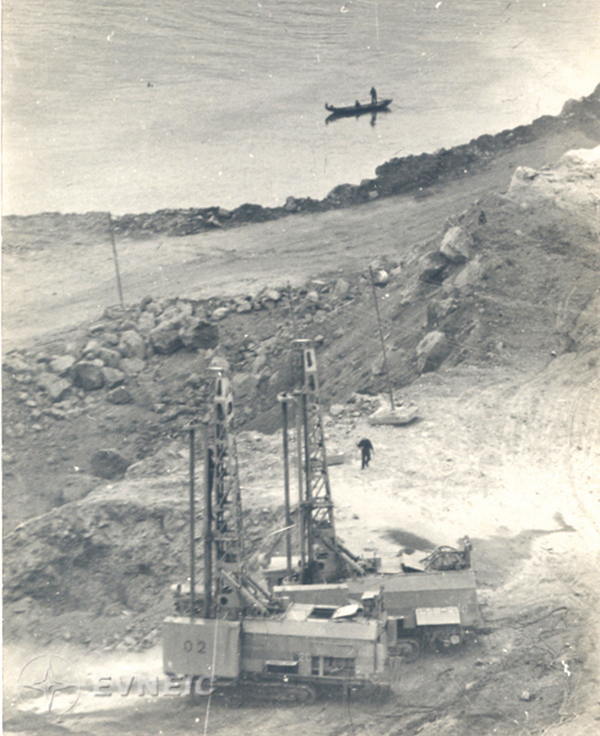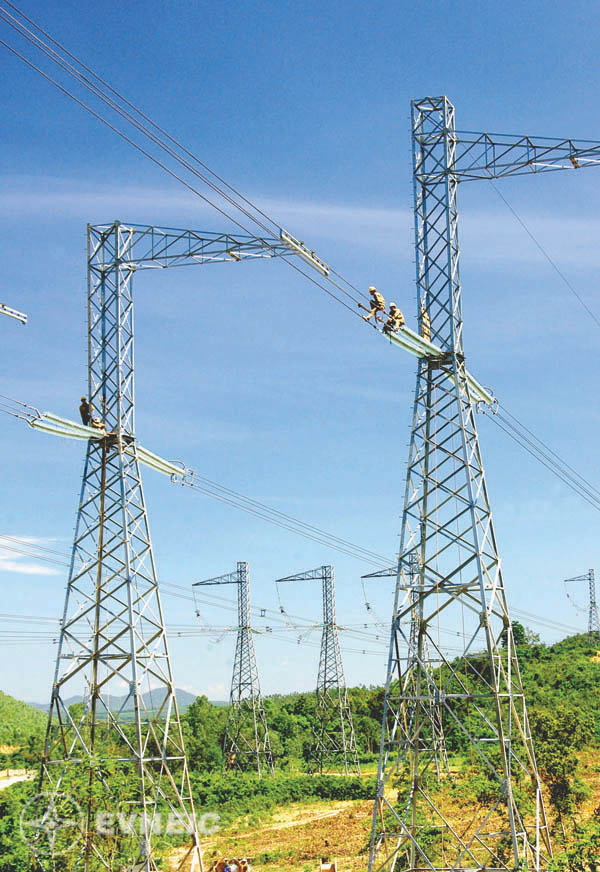1. Establishment of Central Power Company
On October 7, 1975, Central Power Company (now Power Company No. 3) was established. After liberation, most power facilities in the Central region were small and fragmented, with no high-voltage transmission grid. The entire region only had 150 diesel generators scattered across urban areas, with a total installed capacity of 74MW. The establishment of the Central Power Company ensured unified management and operation, while consolidating and developing power production and business in the region. Later renamed Power Company No. 3 (PC3), it is now a subsidiary of Vietnam Electricity (EVN), operating in multiple industries with its core business in power generation and distribution, covering 13 provinces and cities in Central Vietnam and the Central Highlands.
2. Establishment of Southern Power Company
On August 7, 1976, the Minister of Electricity and Coal issued Decision No. 1592/QD-TCCB.3 to rename the General Department of Electricity (established immediately after the complete liberation of the South) as Southern Power Company. On May 9, 1981, the company was renamed Power Company No. 2, as per Decision No. 15/TTCBB.3, issued by the Minister of Electricity. On April 7, 1993, the Prime Minister issued Decision No. 147-TTg transferring Power Company No. 2 to the Ministry of Energy. From April 1, 1995, Power Company No. 2 was reorganized under the Vietnam Electricity Corporation (now Vietnam Electricity - EVN).
3. Construction of first 220kV transmission line
In March 1979, the Ha Dong - Hoa Binh 220kV transmission line commenced and was put into operation in May 1981. This was the first 220kV transmission line in the North, enhancing transmission capacity, power supply, and laying the technical foundation for the later construction of the North-South 500kV ultra-high-voltage line.
4. Construction of Hoa Binh Hydropower Plant - first largest in Vietnam

Photo credit: Tran Nguyen Hoi
On November 6, 1979, tens of thousands of Vietnamese staff and workers, along with 186 Soviet experts, participated in the Groundbreaking Ceremony of the Hoa Binh Hydropower Plant. At the time, it was the largest hydropower project in Vietnam, supported by the Soviet Union, with 8 generating units totaling 1,920MW. After 3 years, on 9:00 AM of January 12, 1983, the first river diversion was carried out with the presence of Prime Minister Pham Van Dong and Party and State senior leaders. The second diversion was carried out on January 9, 1986. On December 30, 1988, Unit No. 1 (240MW) generated power and synchronized with the national grid. Thereafter, 1-2 units were completed and commissioned each year. The project was officially inaugurated on December 20, 1994. The completion of Hoa Binh Hydropower Plant marked a new stage in the development of Vietnam’s energy sector and the cause of national industrialization and modernization.
5. Implementation of National Power Development Master Plan - Phase 1 (1981-1985)
For the first time, Vietnam developed and implemented a national power development master plan. During this period, the Power sector urgently constructed and completed major strategic projects such as Pha Lai Thermal Power Plant, Hoa Binh Hydropower Plant, and reinforced existing facilities such as Ninh Binh and Thai Nguyen Thermal Power Plants while fully utilizing Thac Ba Hydropower Plant. In terms of the power grid, the sector completed the Thanh Hoa - Vinh and Pha Lai - Ha Dong 220kV lines, as well as Ha Dong 110kV and 220kV substations, which were energized ahead of schedule. The Yen Phu 110kV substation was also under construction. Many substations and distribution lines have been installed and put into operation. Despite economic challenges, the First Master Plan achieved outstanding results: commissioning Pha Lai Thermal Power Plant and key transmission projects on schedule, meeting electricity demand in 1981-1985. Subsequent master plans (Power Development Plans II, III, IV, V) were continuously implemented. Currently, Power Development Plan VI (2006-2015, orientation to 2025) is being executed, with EVN investing in 42 generation projects totaling 22,748MW out of 59,463MW (accounting for 38.3% of new national installed capacity). Investments in 500kV power system with 13,200MVA substation capacity and 3,178km of lines; 220kV grid system with 39,063MVA and 9,592km; 110kV grid system with 41,315MVA and 12,659km. Preparations for Power Development Plan VII are currently underway.
6. Construction of North-South 500kV ultra-high-voltage line

Photo: Ngoc Ha (Vietnam News Agency)
On April 5, 1992, construction of the 1,487km North-South 500kV transmission line (Circuit 1) commenced. On May 27, 1994, it was inaugurated and energized. This milestone demonstrated a breakthrough in Vietnam’s power sector. From then on, the national power system was interconnected through the “backbone” of the 500kV line, linking the North, Central, and South regions. On October 23, 2005, Circuit 2 of the 500kV line was completed and energized, ensuring the 500kV ultra-high-voltage double-circuit transmission system operates with bidirectional power flow between the North and the South, providing a strong interconnection with safe and reliable operation. If Circuit 1 reflected determination, effort, and intellectual capacity, then the success of Circuit 2 reaffirmed the “Vietnamese brand” in manufacturing equipment, engineering, and construction of ultra-high-voltage transmission lines.
7. Establishment of the National Load Dispatch Center (NLDC)
On April 11, 1994, Minister of Energy Thai Phung Ne signed Decision No. 180/NL/TCCB-LD establishing the National Load Dispatch Center (A0). Its mandate is to command and operate power generation, transmission, and distribution within the national power system according to dispatch management levels, ensuring optimal technical and economic results, while maintaining a safe, continuous, and reliable operation of the national grid.
Translator: Thu Hường
Share